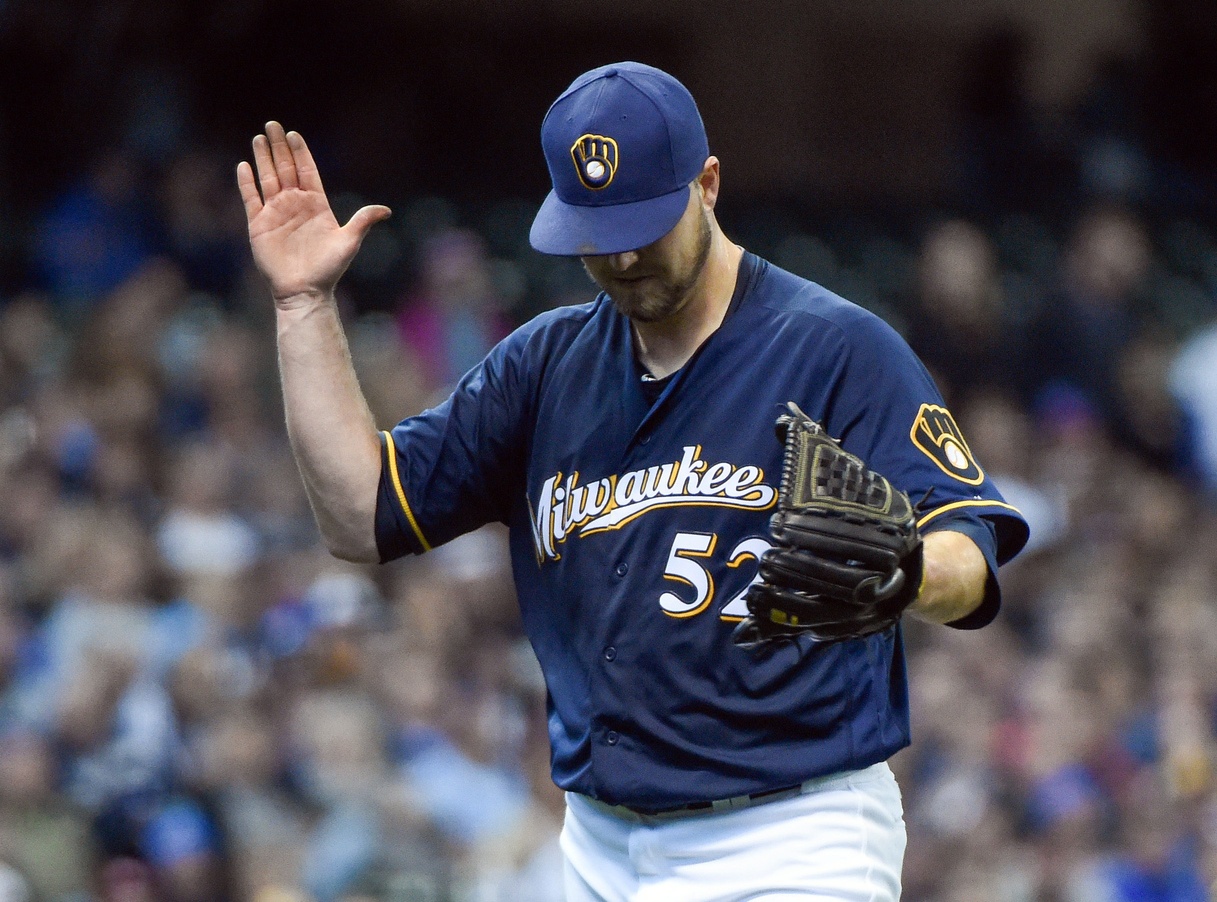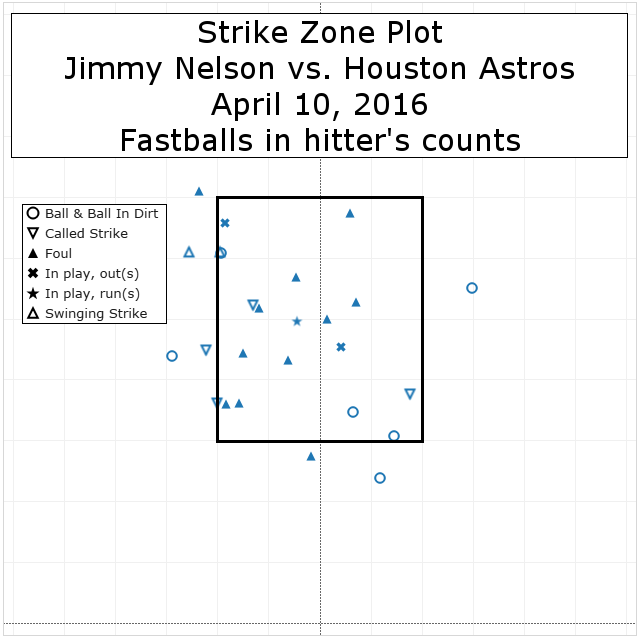Jimmy Nelson has had a strong beginning to his second major league season, with two straight quality starts out of the gate. Although Nelson’s peripheral numbers aren’t pretty — he has walked five and given up three home runs in his first two starts, giving him a 5.60 FIP — Nelson has been able to use his powerful fastball to get out of jams and keep the lineups of two contending teams in San Francisco and Houston from stringing together rallies.
On Sunday, Nelson pitched six innings (and walked one batter in the seventh), struck out nine, walked four, and held the Astros to three hits and two runs, both coming on solo home runs. Nelson was far from his sharpest, as he threw just nine first-pitch strikes to 22 hitters and constantly found himself behind in the count. His off-speed stuff wasn’t fooling anybody either, as he drew just two swinging strikes between 43 combined sliders and knuckle-curves (per Brooks Baseball). And yet, he still managed to keep the Astros off balance all day long and earn the victory.
I was most impressed with Nelson’s ability to use his fastballs — the sinker and the four-seamer — in hitters’ counts. Throwing so few first-pitch strikes meant Nelson was stuck in obvious fastball counts for much of the game, and as good as Nelson’s fastball can be, hitters have a much easier time with it when they can guess it’s coming. But Nelson was able to use his fastball to get back into counts all day long, whether it was through nibbling the corners for called strikes or getting foul balls on pitches over the heart of the plate, as this plot from Brooks Baseball shows:

